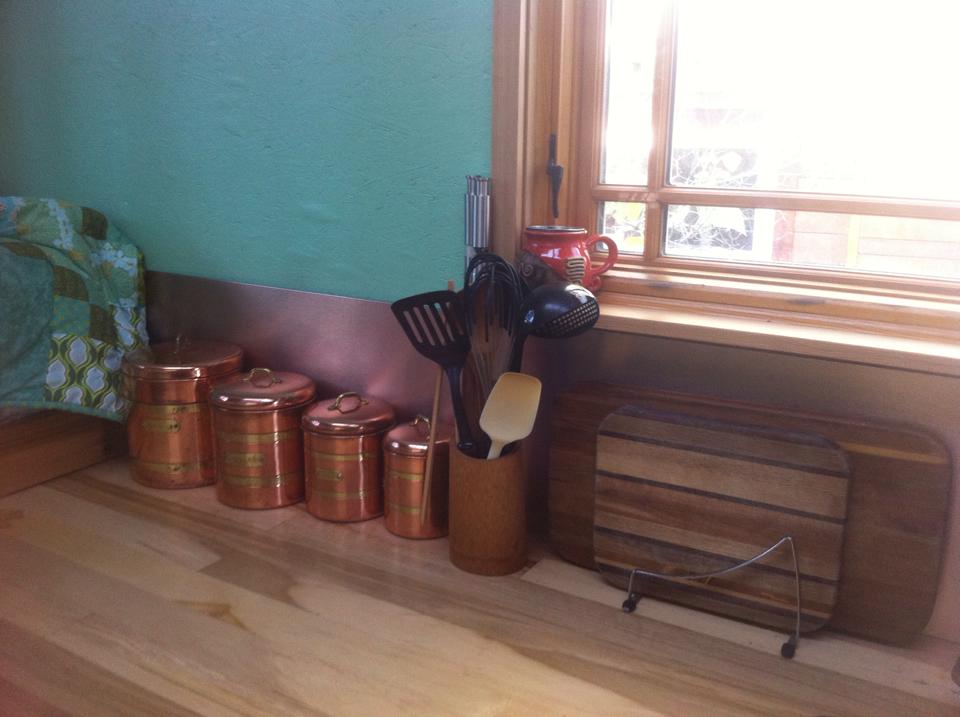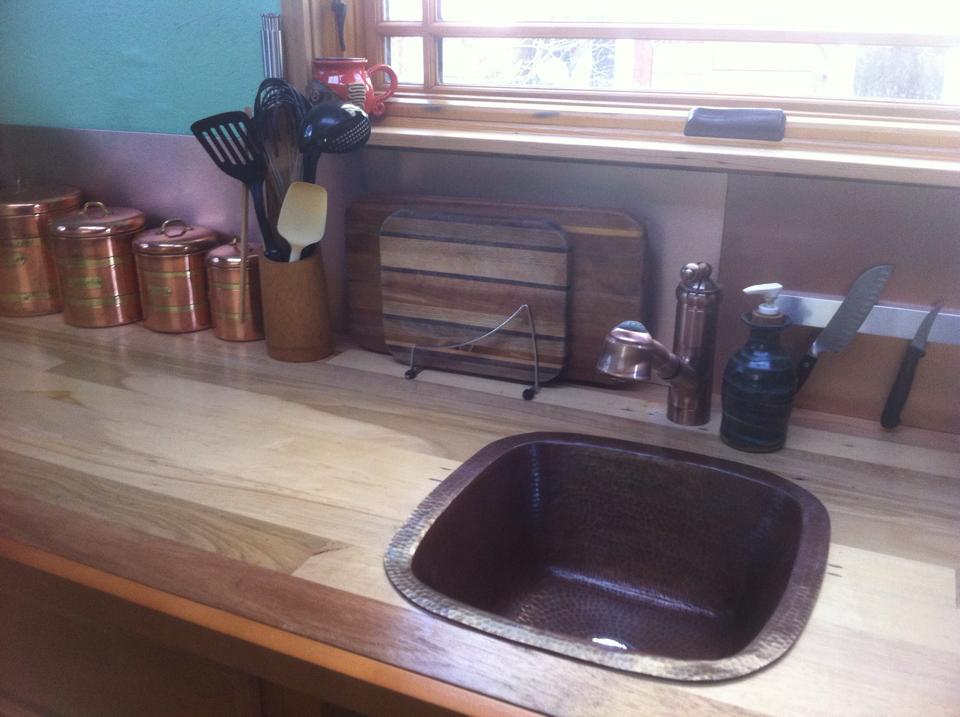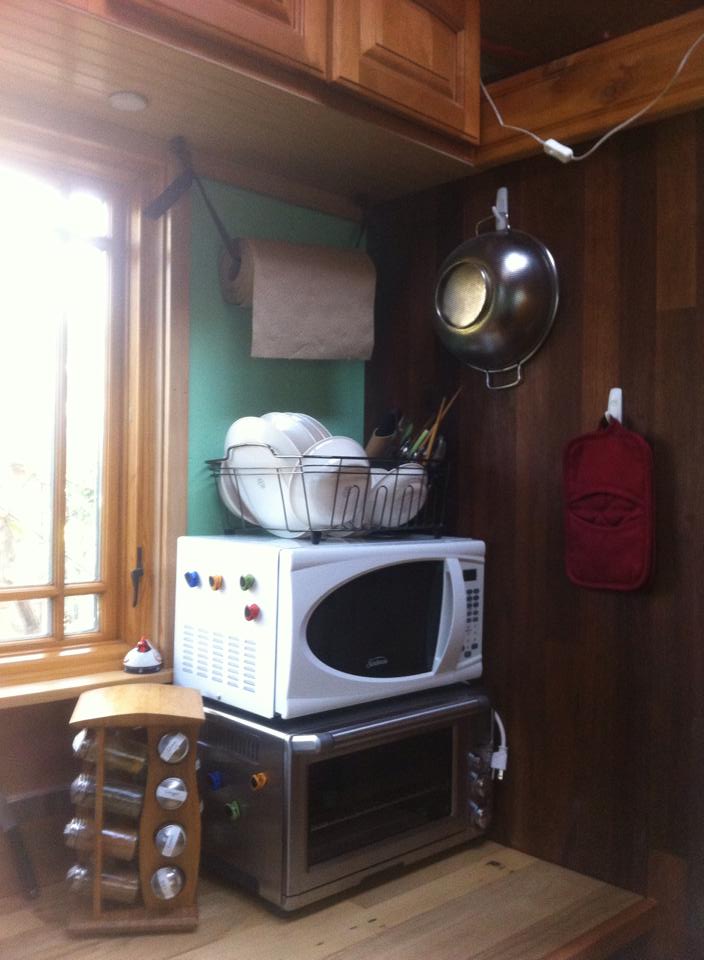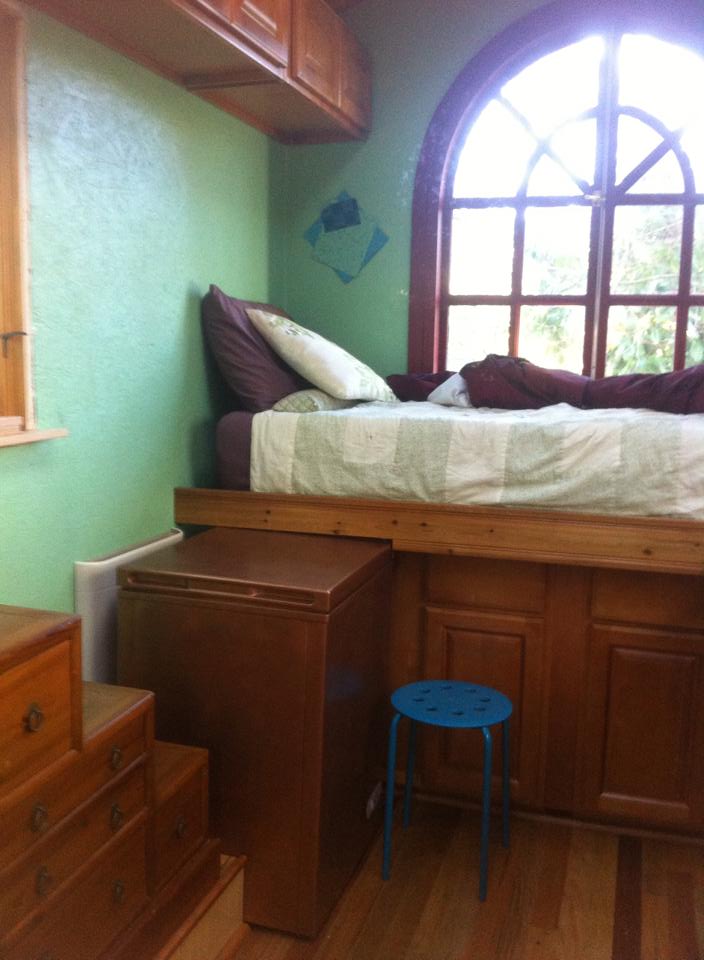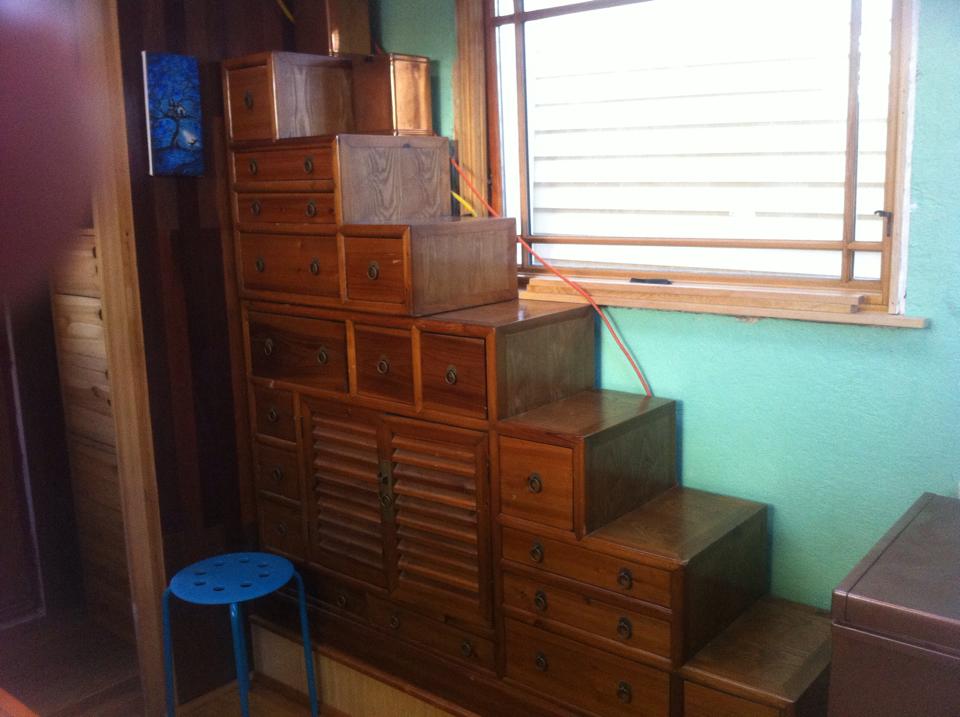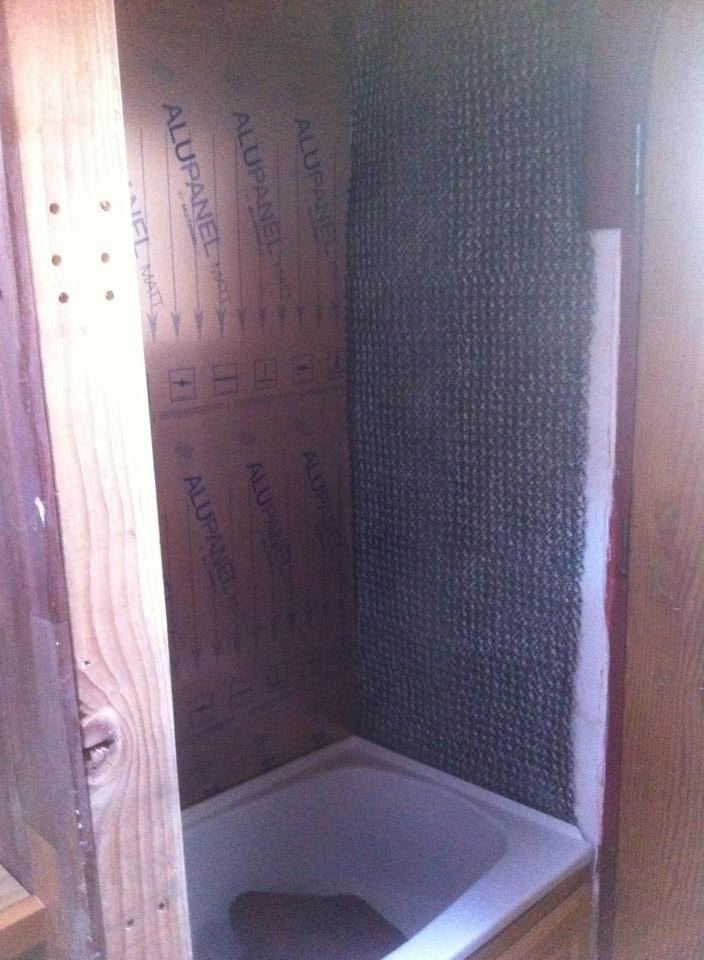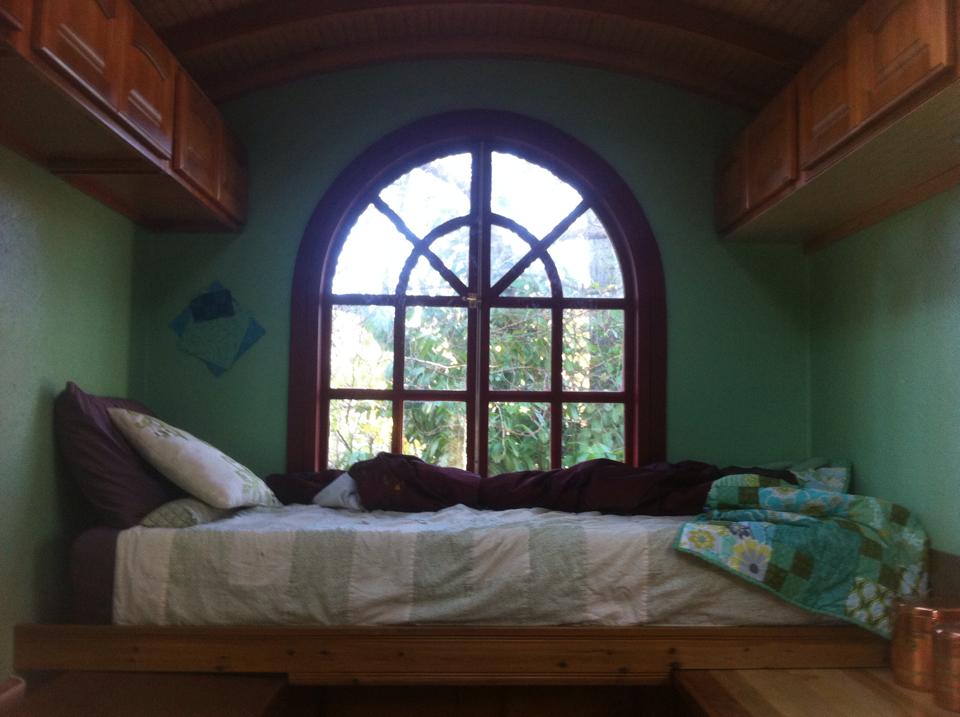Here at our tiny cohousing community, Going Places, we all share the main floor of the common house, which has a kitchen, dining room, living room, bathroom, and a flexible space called the Req Room (you Harry Potter fans out there know what we're talking about!) In addition to all this shared space, we also have two tiny houses on the property, The Lucky Penny and Tiny for Two (T42), which act as detached bedrooms.
We are Going Places
Creating a New Tiny Cohousing Community
A week ago today my fiance Isha and I got the keys to our new home and we're eager to tell you all about it! We had this vision in mind but we didn't expect that we'd manifest it so quickly! A couple months ago Isha spotted a property that seemed to meet our criteria. It was a beautifully renovated 1920s home with the possibility of creating a functional ADU, a fenced yard with garden beds, and we already knew some of the neighbors. So we checked it out, decided it would be an awesome fit, and placed an offer. Everything came together so quickly we were afraid to jinx it. Indeed at a few points we didn't think it was going to work out, so we were keeping it on the down-low. But it did work out in the end.
Move In Day & Housewarming
 Six months ago I started building myself a tiny house called The Lucky Penny. And last night our Tiny Cohousing community, Simply Home Community, hosted a housewarming party. It was good timing, too. Portland has had the first wintry weather of the year this week, so it was awfully nice to have people warming the place up with compliments and congratulations. (Having the space heater running on an extension cord probably helped, too!)
Six months ago I started building myself a tiny house called The Lucky Penny. And last night our Tiny Cohousing community, Simply Home Community, hosted a housewarming party. It was good timing, too. Portland has had the first wintry weather of the year this week, so it was awfully nice to have people warming the place up with compliments and congratulations. (Having the space heater running on an extension cord probably helped, too!)
It was great fun to share my little house with friends whom I've neglected because... well, I've been building my little house. I'm looking forward to wrapping up the last few absolutely necessary things so that I can start Settling Into My Tiny House AND resume my social life!
(Speaking of socializing, it was also neat last night to share tours of my house with friends of my landies and to discover mutual connections we already have. It's a tiny world after all! And of course, it doesn't hurt to have strangers say "Your house is gorgeous!" or "It's like a cathedral in here!")
When I My Tiny House Build Began, my work plan indicated that by mid-summer I would complete the first two phases: Get it Dried In and Make it Functional. I figured I'd give myself some extra time for the unforeseen and I'd begin Phase 3: Make it Home by the end of summer. But, of course, it's a construction project, so it's taking twice as long as I originally estimated.
It's now mid-November and my house is just now functional (if you consider that my house doesn't have to be fully independent because I have access to the kitchen and bathroom in the Big House). My friend Benn Kovko (who built Kangablue at Caravan - The Tiny House Hotel) has been working with me on the plumbing and we're about 1/3 of the way done. We'll be working on it again today. Still on the list after plumbing: electrical, trim, and The Punch List.
But for the sake of the housewarming party I've already shifted into Phase 3: Make it Home. Yesterday I moved most of my possessions into The Lucky Penny and started the process of putting Everything in its Place. I can't tell you how satisfying it was to hang decorations yesterday morning!
I'm looking forward to Settling into My Tiny House! Stay tuned for catch up blog posts this winter sharing more information and photos about the build process.
Lina's Vision for Tiny Cohousing
After studying ecovillages, communes, and housing cooperatives for the past fifteen years, I’ve come to believe that cohousing is the most comfortable fit for many Americans interested in collaborative living. Cohousing strikes a healthy balance between common, private, and public spaces. It enables people to find a comfortable blend of privacy and interaction. Tiny House Communities would do all this on a micro scale, using existing infrastructure and affordable, sustainable homes. In fact, tiny cohousing may be our best bet for creating sustainable, livable communities within the constraints of our existing economy and built environment.
As I envision it, the ideal tiny cohousing site would be a piece of property in a convenient-to-services-and-transit location with a small existing house that could serve as the common house. (Some others might be more interested in a rural location and one of the cool things about cohousing communities is that they are located across the urban to rural transect so people can find one that suits their desires.) Somewhere around 4-6 tiny houses seems to me like it would be just right to create a sense of community while also keeping things manageable in an infill scenario.
The common house could have a living room big enough for gatherings and entertaining, a bathroom with a shower and toilet, and a washing machine. There would also be a room or two that could be rented as workspace for home-based businesses or reserved for the weekend for out-of-town guests. There might be a garage or shed that could be a common workshop. The members could share a grill, a lawn mower, and even a car or pick-up truck (which could also be part of Getaround, of course!) Perhaps there would also be garden space with perennials and fruit trees as well as plots where members of the community could grow annual veggies and flowers. Of course, the common house would also have that most important of rooms - a kitchen - with an oven with full-size cookie sheets, a food processor, a blender, etc.
People who lived in a tiny house community would have access to all these things, but they wouldn’t have to own all these things themselves. They would have an ownership share in caring for these common spaces and items because part of the rent for their parking spot would go to maintaining the common spaces. It’s fairly typical in cohousing communities to design smaller individual units and dedicate part of the space and money that would have been private to the common house and other common areas. Tiny cohousing would just push the envelope on this point.
The tiny houses would be private, providing a place of one’s own for each individual, couple, or family. People wouldn’t have to trip over housemates (or their neighbors dishes!) Since the common house would have some combination of bathing, toilet, and cooking facilities, the tiny houses could be fairly simple (more like detached bedrooms). In Denmark where cohousing originated, many of the units are rentals, but here in the United States most cohousing communities are owner-occupied. In a tiny house community the cost of a tiny house would be reasonable enough that people could either move their own tiny homes to the property or rent a tiny house located on the property.
It seems to me tiny cohousing would be a good option for compact, infill development in low-density neighborhoods. Since the tiny houses would most likely be on wheels they would be mobile, so they wouldn’t permanently alter the character of the existing neighborhoods. (Of course, with the right zoning codes fixed structures would work, too.) There would be flexibility to change the properties over time as the needs of a given neighborhood shifted.
Tiny house residents could come and go, moving to a different tiny house community on the other side of town and taking their house with them. Tiny cohousing could provide affordable housing for students or retirees. Families could live in a combination of tiny houses, with teenagers in their own tiny houses next door, testing their independence within the support of the larger community. Building a tiny house might be a rite of passage for some teens. (A few super inspirational teens like Celina Dill Pickle are already building their own tiny houses and they’re planning to take them along to college – these are smart kids are my heros!) The communities could be multi-generational and could draw people from a variety of backgrounds with different skill sets and interests.
Members of tiny cohousing could decide whether to divide the labor of maintaining the common house and the common spaces amongst themselves (and, if so, what system would work best for them). Or they could outsource this work, paying someone else to do it and creating local jobs. They could make choices collectively about whether to share resources such as tools, bulk food, or outdoor equipment like kayaks and bicycle trailers. They could also elect to have common meals, which could range from taking turns cooking for each other daily to having a weekly or monthly potluck. And, of course, they could develop traditions as all communities do: ways to celebrate birthdays, holidays, and the passing of the seasons.
Tiny House Community
 Tiny house enthusiasts across the country (and perhaps around the world) are envisioning tiny house communities. (You can see my Vision for Tiny Cohousing here.) All of us think we’ve invented the idea ourselves. I certainly did when I first described it to another cohousing enthusiast three years ago. But then I found the Low Cost Community Housing Google Group which had some lively conversations but has been silent since 2010 when Marganne posed the question "Where do we go from here?" I think she and her blog Cohousing, Small House Movement were ahead of their time. These days, it's pretty common to hear tiny house lovers exclaim, “I have this great idea of creating a whole community of tiny houses!” After they get over the initial disappointment that they didn't invent it, they get excited that there are other people who want to do it, too. The Tiny House Movement has gained considerable momentum in the past two years and I think it's time for a rekindling of the conversation about tiny house communities.
Tiny house enthusiasts across the country (and perhaps around the world) are envisioning tiny house communities. (You can see my Vision for Tiny Cohousing here.) All of us think we’ve invented the idea ourselves. I certainly did when I first described it to another cohousing enthusiast three years ago. But then I found the Low Cost Community Housing Google Group which had some lively conversations but has been silent since 2010 when Marganne posed the question "Where do we go from here?" I think she and her blog Cohousing, Small House Movement were ahead of their time. These days, it's pretty common to hear tiny house lovers exclaim, “I have this great idea of creating a whole community of tiny houses!” After they get over the initial disappointment that they didn't invent it, they get excited that there are other people who want to do it, too. The Tiny House Movement has gained considerable momentum in the past two years and I think it's time for a rekindling of the conversation about tiny house communities.
Some imagine a tiny house community as a reinvention of the mobile home park. Some envision a glorified national park campground. Some describe something more like a collection of gypsy wagons. Still others fantasize about tiny house pods like Portland’s food cart pods. Some describe tiny house villages.
Since I have spent half my life studying cohousing, my favorite model for a tiny house community would be a tiny cohousing - a cohousing community composed of tiny houses around a common house. Check out Lina's Vision for Tiny Cohousing for a description of what tiny house cohousing could be like. For more information about traditional cohousing, please check out the Cohousing Association description.








